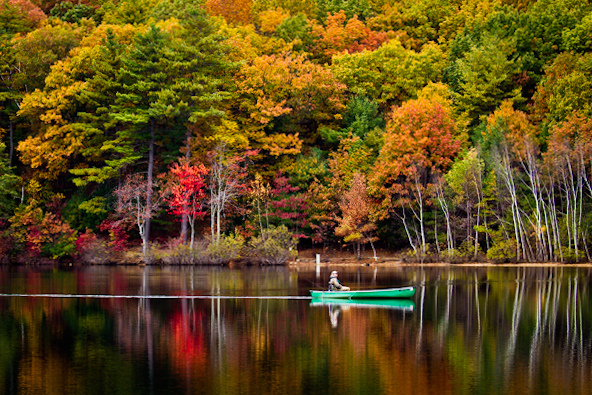On Friday, I’ll be waking up early to join Mass Audubon on a birdwatching outing at Mount Auburn Cemetery in Cambridge, Massachusetts. Waking up early to visit a cemetery might sound like a macabre undertaking, but Mount Auburn is no ordinary cemetery. It was created on the outskirts of Boston in 1831 as America’s first rural or garden cemetery, a precursor to parks in urban areas. The city was yearning for a new aesthetic, a cemetery landscaped with rolling hills, ponds, flowering shrubs, and a mix of trees that provide shade not only for those in mourning, but for the entire public to enjoy their picnic lunch. It became a smashing success that would lay the groundwork for Frederick Law Olmstead to create Central Park in New York and the Emerald Necklace here in Boston some 40 to 50 years later.
Today, more than 200,000 visitors enter the gates of Mount Auburn annually. Sure, they might come to visit the final resting place of a relative or to stop and say thanks to a long list of luminaries in American arts and letters, like Henry Wadsworth Longfellow, Winslow Homer, and Buckminster Fuller, yet others like me simply follow in the footsteps of Roger Tory Peterson, the renowned ornithologist who once led bird walking tours here. The height of the spring migration for warblers usually happens around Mother’s Day each year. Bring your binocs and you might just spot the scruffy yellow chin of the divine Northern Parula warbler. To read more about Boston’s historic cemeteries, see my article from last summer’s American Way magazine, the inflight publication of American Airlines.
 Every weekend now through May 22nd, you can go on a 3-hour guided whitewater rafting trip on the Concord River, just north of Boston. Zoar Outdoor, known for their rafting trips down the Deerfield River in central Mass, is leading trips on the Concord for ages 14 and up. For the price of $83, you can rip through three major class III and IV rapids—Twisted Sister, Three Beauties, and Middlesex Dam. Zoar Outdoor supplies all gear. All you have to do is show up at the UMass Lowell Inn & Conference Center and get ready to scream.
Every weekend now through May 22nd, you can go on a 3-hour guided whitewater rafting trip on the Concord River, just north of Boston. Zoar Outdoor, known for their rafting trips down the Deerfield River in central Mass, is leading trips on the Concord for ages 14 and up. For the price of $83, you can rip through three major class III and IV rapids—Twisted Sister, Three Beauties, and Middlesex Dam. Zoar Outdoor supplies all gear. All you have to do is show up at the UMass Lowell Inn & Conference Center and get ready to scream. 
 “I went to the woods because I wished to live deliberately, to front only the essential facts of life, and see if I could not learn what it had to teach, and not, when I came to die, discover that I had not lived,” wrote Henry David Thoreau in his best known work, Walden. Thoreau ventured to the woods with ax in tow in March 1845 to build his historic hut. Never would this modest writer imagine what an impact his philosophical musings would have on the world 160 years later. For two years, two months, and two days, Thoreau lived alone in the woods, a mile from any neighbor, in his rustic abode built near the shores of
“I went to the woods because I wished to live deliberately, to front only the essential facts of life, and see if I could not learn what it had to teach, and not, when I came to die, discover that I had not lived,” wrote Henry David Thoreau in his best known work, Walden. Thoreau ventured to the woods with ax in tow in March 1845 to build his historic hut. Never would this modest writer imagine what an impact his philosophical musings would have on the world 160 years later. For two years, two months, and two days, Thoreau lived alone in the woods, a mile from any neighbor, in his rustic abode built near the shores of